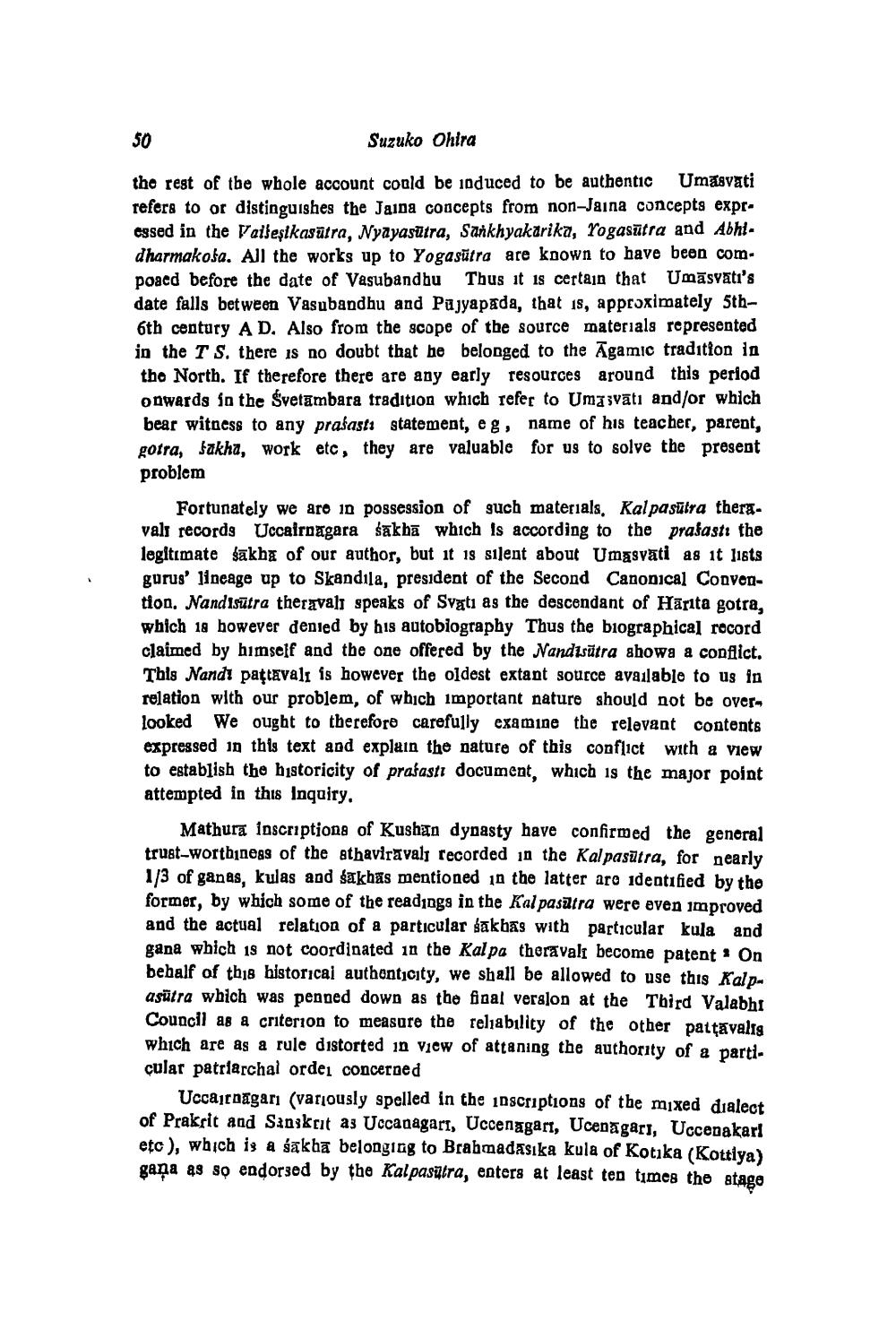________________
50
Suzuko Ohira
the rest of the whole account could be induced to be authentic Umasvati refers to or distinguishes the Jaina concepts from non-Jaina concepts expressed in the Vaišeşikasūtra, Nyayasutra, Sankhyakarika, rogasūtra and Abhi. dharmakosa. All the works up to Yogasūtra are known to have been compoaed before the date of Vasubandhu Thus it is certain that Umāsyati's date falls between Vasubandhu and Pajyapada, that is, approximately 5th6th century AD. Also from the scope of the source materials represented in the T s. there is no doubt that he belonged to the Agamic tradition in the North. If therefore there are any early resources around this period onwards in the Svetambara tradition which refer to Umtsvāti and/or which bear witness to any prasast statement, eg, name of his teacher, parent, gotra, Jakha, work etc, they are valuable for us to solve the present problem
Fortunately we are in possession of such materials, Kal pasūtra thera. vals records Uccairnagara sakba which is according to the prafast: the legitimate sākba of our author, but it is silent about Umasvati as it lists gurus' lineage up to Skandila, president of the Second Canonical Convention. Nandisūtra theravalı speaks of Svati as the descendant of Hārta gotra, which 19 however denied by his autobiography Thus the biographical record claimed by himself and the one offered by the Nandisutra showa a conflict. This Nandı pattavalı is however the oldest extant source available to us in relation with our problem, of which important nature should not be overlooked We ought to therefore carefully examine the relevant contents expressed in this text and explain the nature of this conflict with a view to establish the historicity of prašastı document, which is the major point attempted in this Inquiry.
Mathura inscriptions of Kushan dynasty have confirmed the general trust-worthineas of the athaviravals recorded in the Kalpasūtra, for nearly 1/3 of ganas, kulas and sakhas mentioned in the latter aro identified by the former, by which some of the readings in the Kal pasitra were even improved and the actual relation of a particular sakbks with particular kula and gana which is not coordinated in the Kalpa theravali become patent? On behalf of this historical authonticity, we shall be allowed to use this Kalpasütra which was penned down as the final veralon at the Third Valabhi Council as a criterion to measure the reliability of the other pattavalis which are as a rule distorted in view of attaning the authority of a parti cular patriarchal order concerned
Uccarnagari (variously spelled in the inscriptions of the mixed dialect of Prakrit and Sanket az Uccagagari, Uccenagari, Ucenāgars, Uccepakar! etc), which is a sakba belonging to Brahmadasika kula of Kotika (Kottiya) gaña as so endorsed by the Kalpasūtra, enters at least ten times the stage




